Quality and Safety
At Keck Medical Center of USC, our skilled teams are dedicated to providing safe, high-quality care.
Quality and Safety
At Keck Medical Center of USC, our skilled teams are dedicated to providing safe, high-quality care.
Committed to Quality and Uncompromising Service Excellence
Each day, patients from all over the world seek health care at Keck Medical Center of USC, which includes Keck Hospital of USC and USC Norris Cancer Hospital. They know we are a trusted leader in delivering quality health care.
We not only manage disease but also focus on wellness and improving patient outcomes by carefully studying and applying the latest quality and safety evidence. We advocate for processes that are innovative, compassionate, equitable and of high value.
We strive for transparency through our hospital quality reporting, because informed patients are empowered patients.
How We Measure Success
Patient Outcomes
To ensure the well-being of our patients, we follow the highest safety standards. How we perform across a variety of hospital quality measures tells the story of how well we care for our patients.
Efficiency
Part of providing quality health care is ensuring that people do not have to be readmitted to the hospital unexpectedly. By making our care more efficient, we are able to help reduce unplanned hospital readmissions.
Quality Rankings
Our unwavering dedication to continuous hospital quality improvement has earned us honors and awards from organizations that measure safety and quality, like U.S. News & World Report, Leapfrog and more.
Effectiveness
When health care is effective, it translates to better patient outcomes. We are leveraging the latest advances in evidence-based medicine to deliver better results to our patients with heart failure.
Patient Satisfaction
Patient satisfaction is one way to identify whether people are receiving quality health care. As part of our patient-centered approach, our team is committed to fostering a positive patient experience.
Our Patient Outcomes Data
Patients deserve to know how we perform, and we regularly report on significant patient safety and quality measures. For the following patient safety measurements, lower numbers represent better performance and outcomes.
Central Line–Associated Bloodstream Infection (CLABSI)
Measure Period: 01/2022 to 12/2022
| Keck Hospital of USC1 | California Level2 | National Level2 |
|---|---|---|
| 0.81 | 0.85 | 0.84 |
Central line–associated bloodstream infection (CLABSI): A serious infection that occurs when germs enter the bloodstream through a central line. A central line is a special intravenous (IV) catheter that allows access to a major vein close to the heart and can stay in place for weeks or months. The value shown above is a Standardized Infection Ratio (SIR), which is the ratio of observed-to-expected infections during the measure period. SIRs below 1.00 indicate that the observed number of infections during the measure period was lower than would be expected under normal conditions, whereas values above 1.00 indicate that the observed number of infections was higher than expected.2
Limitations: In the calculation of the SIR, the Centers for Disease Control and Prevention adjusts for differences between hospitals. However, patient risk factors are not taken into account. These patient-specific variables (e.g., poor skin integrity, immunosuppression) can increase the risk of developing a central line infection. Hence, the SIR for hospitals that care for more medically complex or immunosuppressed patients may not be adequately adjusted to account for those patient-specific risk factors.2
1National Healthcare Safety Network’s (NHSN) CLABSI SIR methodology
2Hospital Quality Institute (HQI)
Colon Surgical-Site Infection (SSI)
Measure Period: 01/2022 to 12/2022
| Keck Hospital of USC1 | California Level2 | National Level2 |
|---|---|---|
| 0.90 | 0.93 | 0.88 |
Colon surgical-site infection (SSI): An infection (usually bacterial) that occurs after a person has colorectal surgery that occurs at the body site where the surgery took place. While some involve only the skin, others are more serious and can involve tissues under the skin, organs or implanted material. The value shown above is a Standardized Infection Ratio (SIR), which is the ratio of observed-to-expected infections during the measure period. SIRs below 1.00 indicate that the observed number of infections during the measure period was lower than would be expected under normal conditions, whereas values above 1.00 indicate that the observed number of infections was higher than expected.2
Limitations: Some, but not all, patient-specific risk factors are included in the adjustment of the SIR for these types of infections. However, not all relevant risk factors are included (e.g., trauma, emergency procedures). Hence, the SIRs for hospitals performing more complex procedures or with larger volumes of trauma or emergency procedures may not be adequately adjusted to account for those patient-specific risk factors.2
1National Healthcare Safety Network’s (NHSN) Adult Complex AR SSI SIR methodology
2Hospital Quality Institute (HQI)
Nulliparous, Term, Singleton, Vertex (NTSV) Cesarean Birth Rate
Measure Period: 07/2021 to 06/2022
| Keck Hospital of USC1 | California Level2 | National Level2 |
|---|---|---|
| N/A | 18.80 | N/A |
Nulliparous, Term, Singleton, Vertex (NTSV) Cesarean Birth Rate: The percentage of cesarean (surgical) births among first-time mothers who are at least 37 weeks pregnant with one baby in a head down position (not breech or transverse). Lower values indicate that fewer cesareans were performed in the hospital among primarily low-risk, first-time mothers.2
Limitations: NTSV rates do not take into account certain obstetric conditions, such as placenta previa, that may make cesarean delivery the safer route for both mother and infant.2
1Keck Hospital is not a maternity hospital and is exempted from this measure.
2Hospital Quality Institute (HQI)
Sepsis Mortality
Measure Period: 07/2022 to 06/2023
| Keck Hospital of USC1 | California Level2 | National Level2 |
|---|---|---|
| 29.30 | 14.40 | N/A |
Sepsis mortality: Percent of patients, with a severe infection, who die in the hospital. Most sepsis cases (more than 90%) start outside the hospital. Lower percentage of death indicates better survival.2
Limitations: Use of discharge/administrative data is limiting, since such data has lower specificity for diagnoses than clinical data. In addition, without risk adjustment for differences in patient-specific factors, comparing rates among hospitals is difficult.2
1Hospital Quality Institute (HQI) Sepsis Mortality Methodology
2Hospital Quality Institute (HQI)
30-Day Readmissions
Measure Period: 07/2021 to 06/2022
| Keck Hospital of USC1 | California Level2 | National Level2 |
|---|---|---|
| 14.80 | 14.75 | 14.60 |
30-day readmission – Hospital-wide all-cause 30-day unplanned readmission rate: The percentage of patients who were unexpectedly readmitted within 30 days of discharge from the hospital for any reason. Lower values indicate that fewer cases were unexpectedly readmitted after discharge.2
Limitations: Some, but not all, patient-specific risk factors are included in the adjustment of the readmission rate. However, not all relevant risk factors are included (e.g., trauma, emergency procedures).2
1Agency for Healthcare Research and Quality (AHRQ) 30-Day Unplanned Readmissions
2Hospital Quality Institute (HQI)
Quality Recognitions
Organizations that measure safety and quality routinely recognize our hospitals for their exceptional patient care.
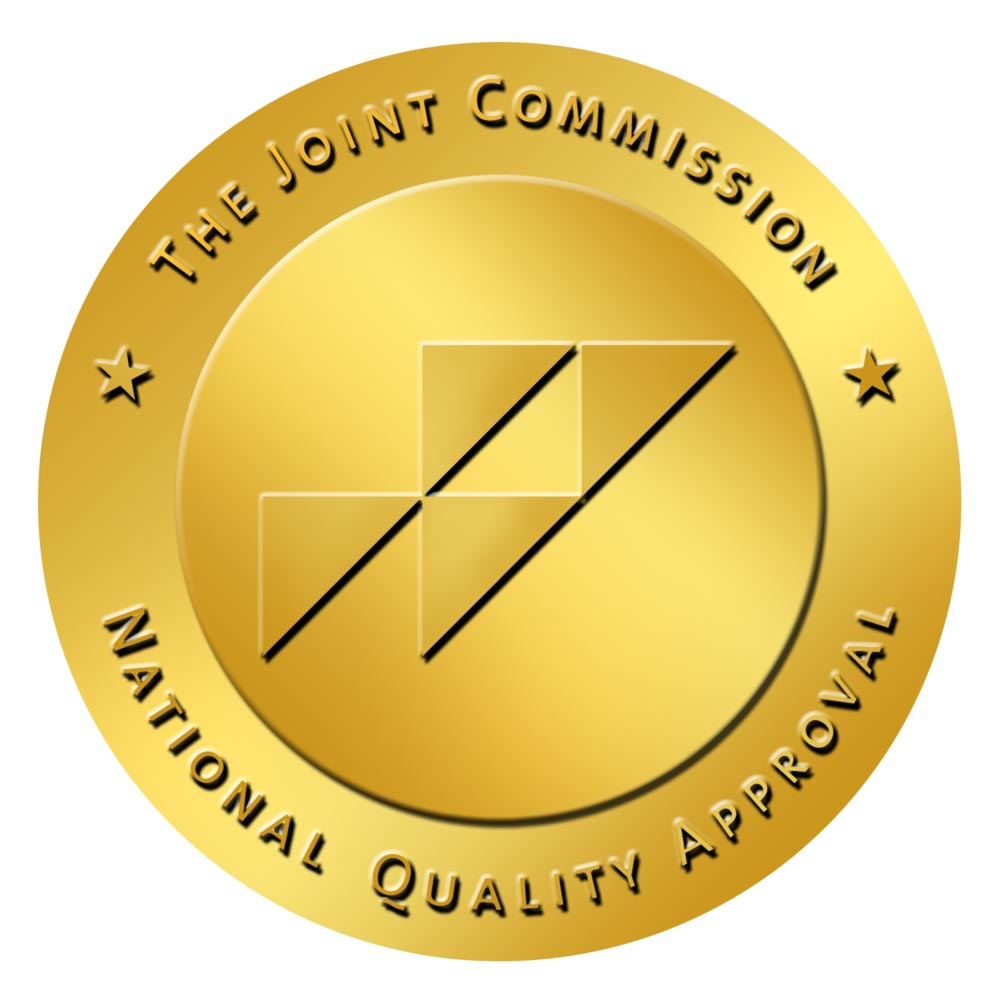
Gold Seal of Approval® from The Joint Commission
Our organizational commitment to providing high quality, safe care for our patients is demonstrated through the achievement of The Gold Seal of Approval® from The Joint Commission. This accreditation agency serves as a trusted resource for best practices within the healthcare industry and are recognized among providers, payers and policymakers.
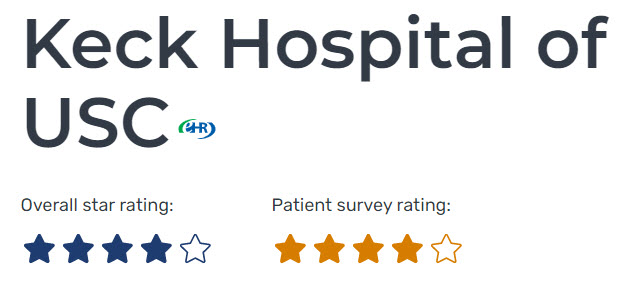
Centers for Medicare & Medicaid Services (CMS) Star Ratings
The Centers for Medicare & Medicaid Services (CMS) created star ratings to help patients and caregivers understand how hospitals perform on key quality measures, such as mortality, safety of care, readmission, patient experience and more.
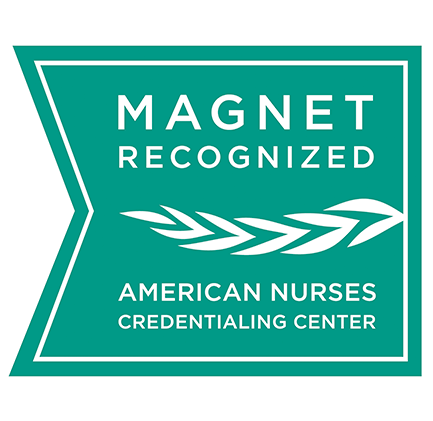
Nursing Magnet Status
The American Nurses Credentialing Center has awarded Keck Hospital a Magnet Recognition, the highest and most prestigious distinction a health care organization can receive for nursing excellence and high-quality patient care.
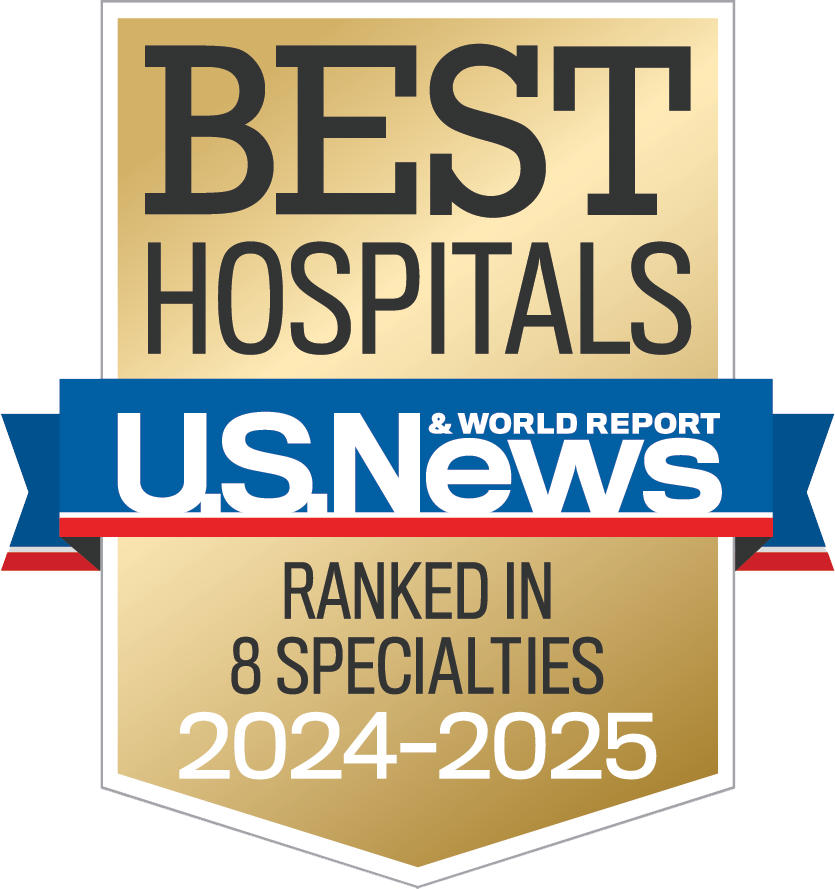
USC Norris Cancer Hospital
U.S. News & World Report’s Best Hospitals
Keck Medical Center of USC, which includes Keck Hospital and USC Norris Cancer Hospital, is among the top 50 hospitals in the country in eight specialties, as well as the top three hospitals in metro Los Angeles and top 10 hospitals in California, according to U.S. News & World Report’s 2024-25 Best Hospitals rankings.
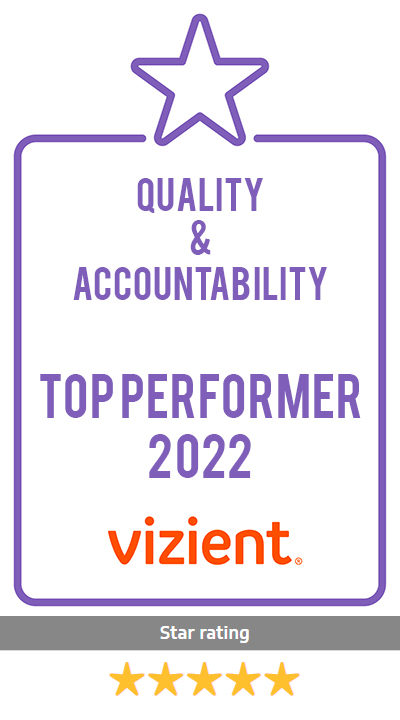
Vizient
Each year, health care performance improvement company Vizient assesses data from participating academic medical centers to measure performance in safety, mortality, effectiveness, efficiency and patient-centeredness. Vizient uses this data to rank academic medical centers in their Quality and Accountability Scorecard.
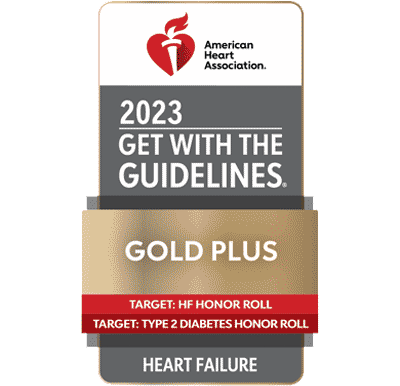
Leading in Effective Heart Failure Care
Our teams are on a mission to deliver effective care. That’s why we participate in the American Heart Association’s Get with the Guidelines quality improvement program, which leverages evidence-based care to improve outcomes for patients with heart failure.
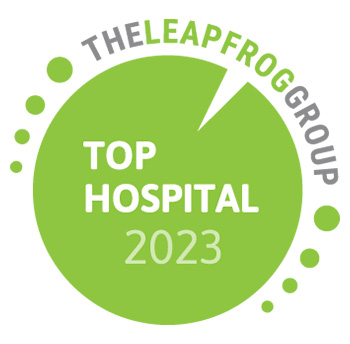
USC Norris Cancer Hospital Leapfrog Top Teaching Hospital Award
USC Norris Cancer Hospital has been recognized as a top teaching hospital by The Leapfrog Group, a national organization dedicated to monitoring hospitals. To be eligible for the designation, hospitals must rank highest among peers in the Leapfrog Hospital Survey, which assesses various aspects of patient care, including practices for safe surgery and preventing patient risk.
Ensuring Patient Satisfaction
We are dedicated to providing an exceptional health care experience for our patients and their families. One way we measure our success is through our annual Consumer Assessment of Healthcare Providers and Systems (CAHPS) scores.
Keck Hospital of USC

HCAHPS Summary Ratings
4 Star Domains
- Communication with Nurses
- Responsiveness with Hospital Staff
- Communication with Doctors
- Discharge Information
- Care Transitions
USC Norris Cancer Hospital

HCAHPS Summary Ratings
5 Star Domains
- Communication with Doctors
- Communication About Meds
- Discharge Information
- Care Transitions
